WILDER SIDE OF OAKLAND COUNTY
Autumn has arrived and signs of the new season are everywhere. Gusts of wind send black walnuts and acorns plummeting earthward. Goldenrod and asters entice honeybees to their final foraging missions. Tree leaves are transforming from summery shades of green to fiery crimsons, brilliant yellows, and warm almost-glowing golds. They are all great signs of summer’s end but I’m most excited about a certain fantastic fall fungi. Are you ready to hunt the Chicken of the Woods? I am.



Late September is when I accelerate my practice of hunting “chickens” in the woodlands of Oakland County, and, at times, in our state’s expansive northern woodlands. Although many species of fungi are naturally camouflaged and remain well-hidden in their environment, my quest is for a brilliantly colored fungus that all but screams out, “Look at me! Look at me! Look at me!” There is nothing subtle about the appearance of Chicken of the Woods, the gateway mushroom for many novice forest fungi foragers.

Chicken of the Woods bears the scientific name of Laetiporus sulphureus. The second part of its scientific name, sulphureus, is a reference to its sulfur-like coloration, which is why the mushroom also has a common colloquial name, “Sulphur Shelf.”
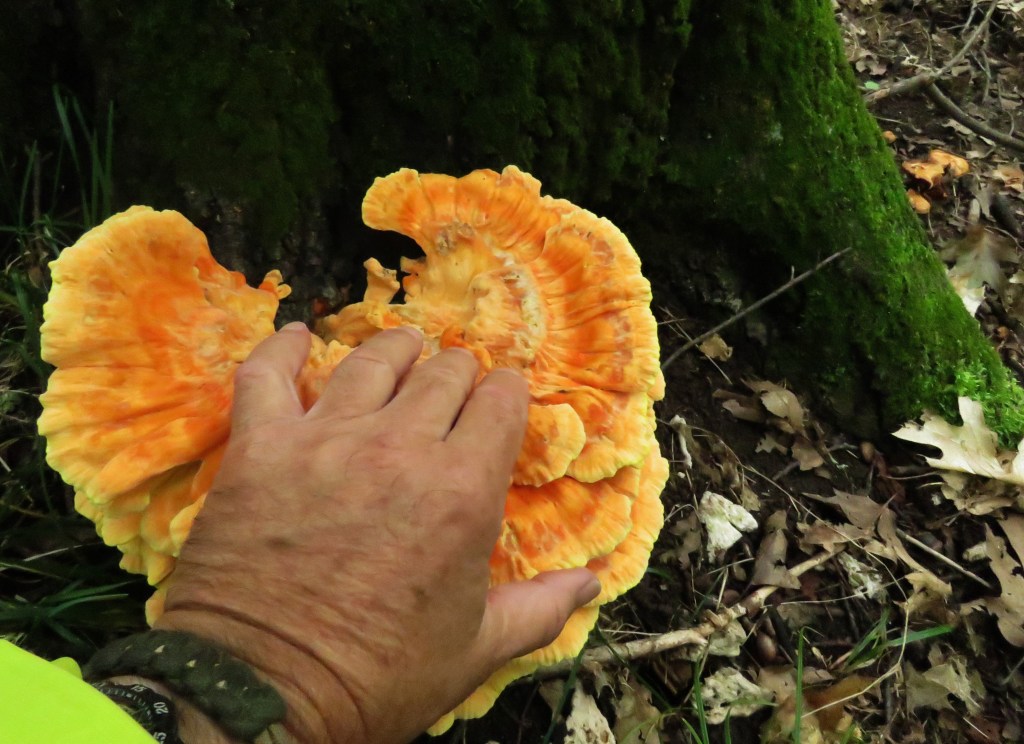
It’s a rather rubbery-feeling fungus, boasting brilliant shades of yellow and orange, similar to the eye-catching colors of safety vests worn by highway work crews. It’s very easy to spot from a distance, especially when its shelf-like clusters appear in abundance on tree trunks. Some are just inches from the ground, others ten or even twenty feet high. Someone with an active imagination would almost expect to see a Leprechaun leaping from brilliant cluster to cluster.

With just a bit of practice, a mature specimen is hard to mistake for anything else, but it’s always best to hunt with an experienced forager the first time. To the newbie fungi forager – I am just a few steps beyond being a newbie – the hunt is half the fun and a great excuse to explore our parks and wild lands.
It’s also important to note that Chicken of the Woods do not grow directly out of the earth like many other common fall mushrooms such as the Jack-O’-Lantern and Fly Agaric, both of which are poisonous and bear no resemblance to Chicken of the Woods, except for the coloration. The “chicken,” however, sometimes appears to grow from the earth, but a closer look will show it’s actually emerging from a partially buried decaying log.
As I was hiking around Crooked Lake at Independence Oaks County Park in early September, I realized that young specimens of Chicken of the Woods can cause confusion. I encountered strange looking yellow marshmallow-like structures growing on the side of a mature oak tree. I had no idea what they were.
After sending the photos to an experienced forager skilled in mycology, she informed me they were newly emerging Chicken of the Woods, and also advised me tender new ones are a palate pleasing treat when properly prepared. I made note of the fact for next September.
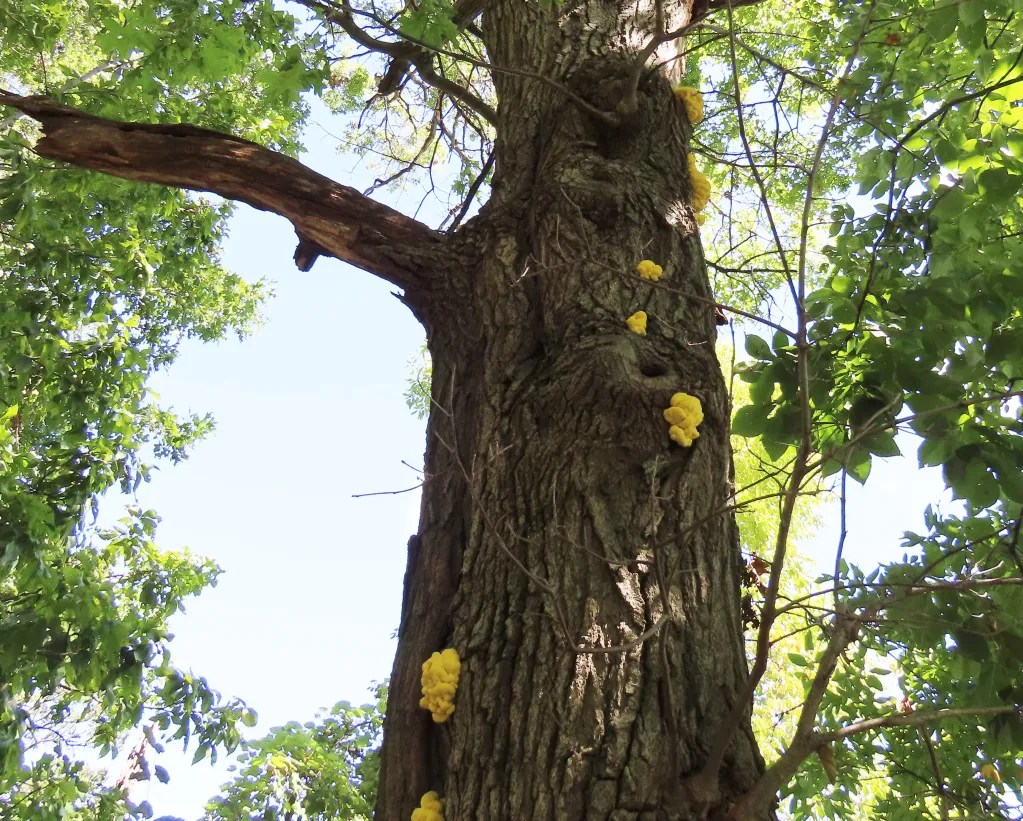

As for its “chicken” name, they are said to taste like chicken. I’ve fried them in butter and roasted them over a barbecue grill. Do they really taste like chicken? That may depend on how you prepare chicken, but the texture and flavor does have similarity to chicken, and they are very tasty when gathered while fresh and prepared properly.
I would describe the flavor as more crab-like, perhaps crab that shared a cast iron pan with sautéed chicken. As I’ve experimented with different methods of preparation, I discovered that Chicken of the Woods maintains its deep orange color even after sautéeing in a frying pan. Do not forget to check for hidden bugs, slugs, and grubs hidden on specimens, unless you want extra protein in this tasty treat from nature’s wilds.


The heavy rains of mid-September apparently accelerated the growth of numerous species of fungi, turning damp woodlands into colorful easels of fantastic finds of mushrooms of varying shapes, colors, and sizes. Chicken of the woods is one of them. They are most likely to be found on oak trees and decaying hardwood logs.
Oak trees are a dominant hardwood species in Oakland County, increasing the chances of a successful hunt. If you find some this year that are too old to harvest, make note of the location and fresh ones will most likely be found in the same location next year. Sometimes you will even find them emerging in the spring. I’ve also noticed growth of Chicken of the Woods and other species of fungi growing along roadsides. These should not be harvested, as fungi absorb pollutants and chemicals from the environment, especially along heavily traveled roads.

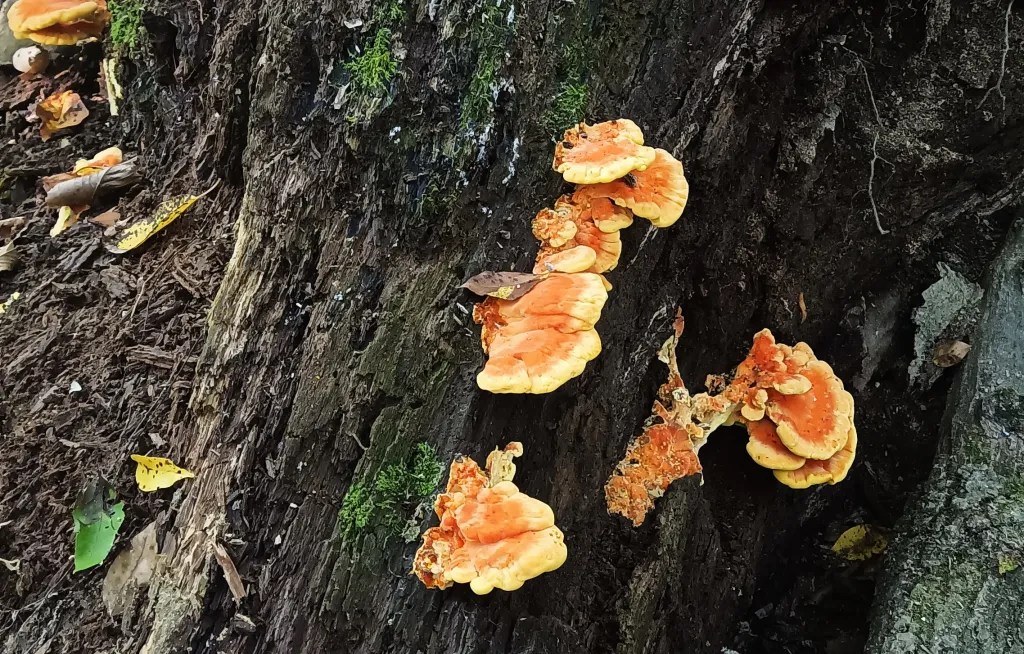
Chicken of the Woods is sometimes confused with Hen of the Woods (Grifola frondosa), not because of their appearances, but because of their names. Hen of the Woods is another delicacy found in our woodlands and sought after by foragers. It usually grows at the base of oak trees and creates large, circular gray clusters of spoon-shaped caps which resemble the ruffled tail feathers of a sitting hen, thus the catchy name, Hen of the Woods.
This image of Hen of the Woods was shared with me by Karen Vickers, an experienced fungi forager. The woodland “hen” is also said to taste almost exactly like – yes, you guessed it, chicken! I’ve never tried it, but it’s on my sample list.
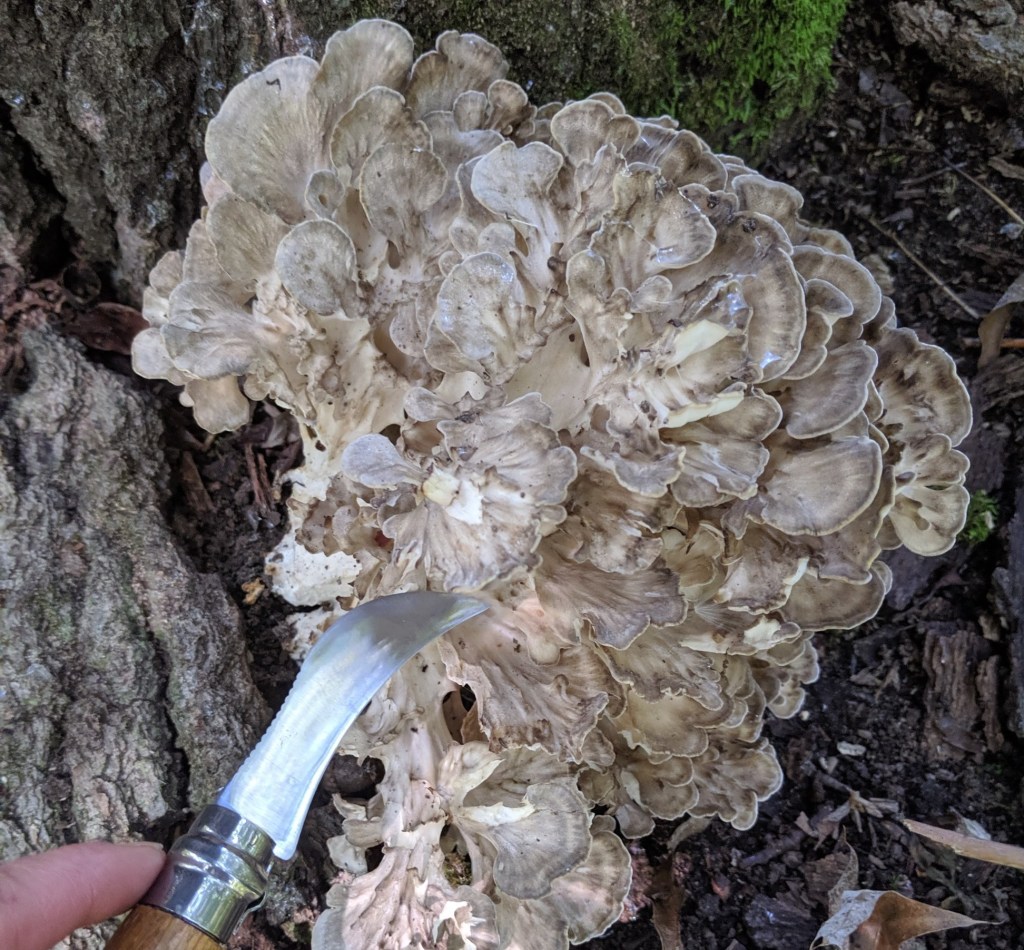
A few words of caution before you start hunting the Chicken of the Woods or any other fungi. Never consume wild mushrooms unless you are 100 percent confident your identification is correct and the species is listed as edible. Even then, start with a small, properly cooked sample. You should also avoid eating any Chicken of the Woods found on conifer trees. That is likely to lead to gastric distress. Just because deer or mice might nibble on them does not mean you can.
Healthline.com has some safety tips and identification information for foragers, including the Chicken and the Hen of the Woods. If you have the slightest doubt on the species you found, let your eyes alone do the feasting, keep on hiking, and enjoy your woodland adventure on the wilder side of Oakland County in these early days of autumn.

Jonathan Schechter is the nature education writer for Oakland County Government and blogs about nature’s way on the Wilder Side of Oakland County.
Follow along with Oakland County on Facebook, Instagram, LinkedIn, Pinterest, Twitter, and YouTube using #OaklandCounty, or visit our website for news and events year-round.


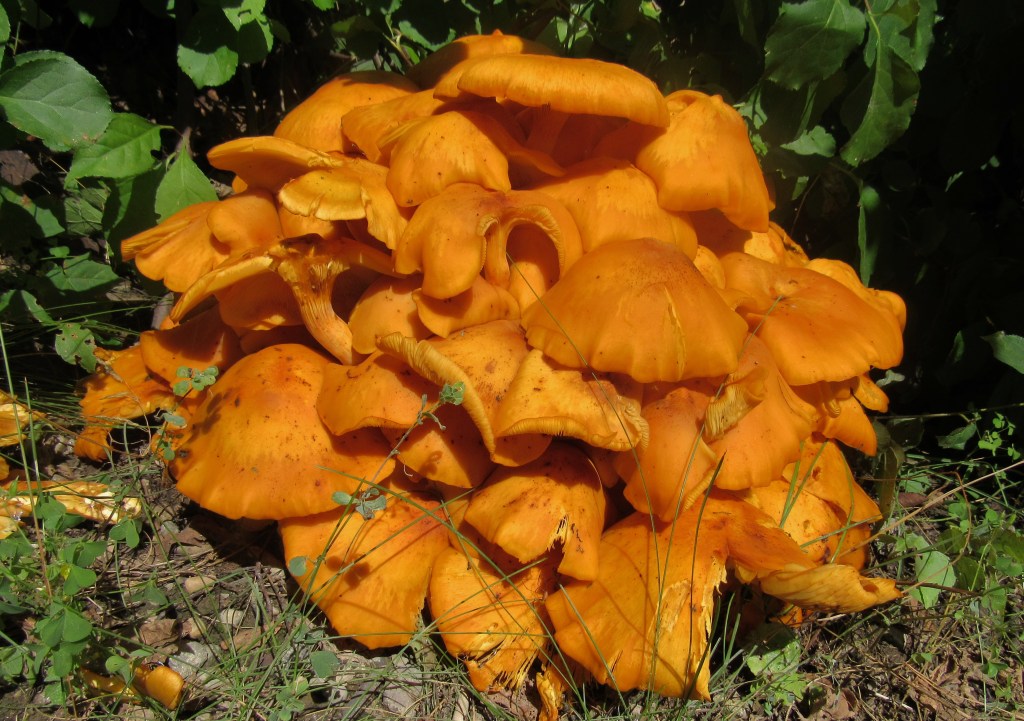

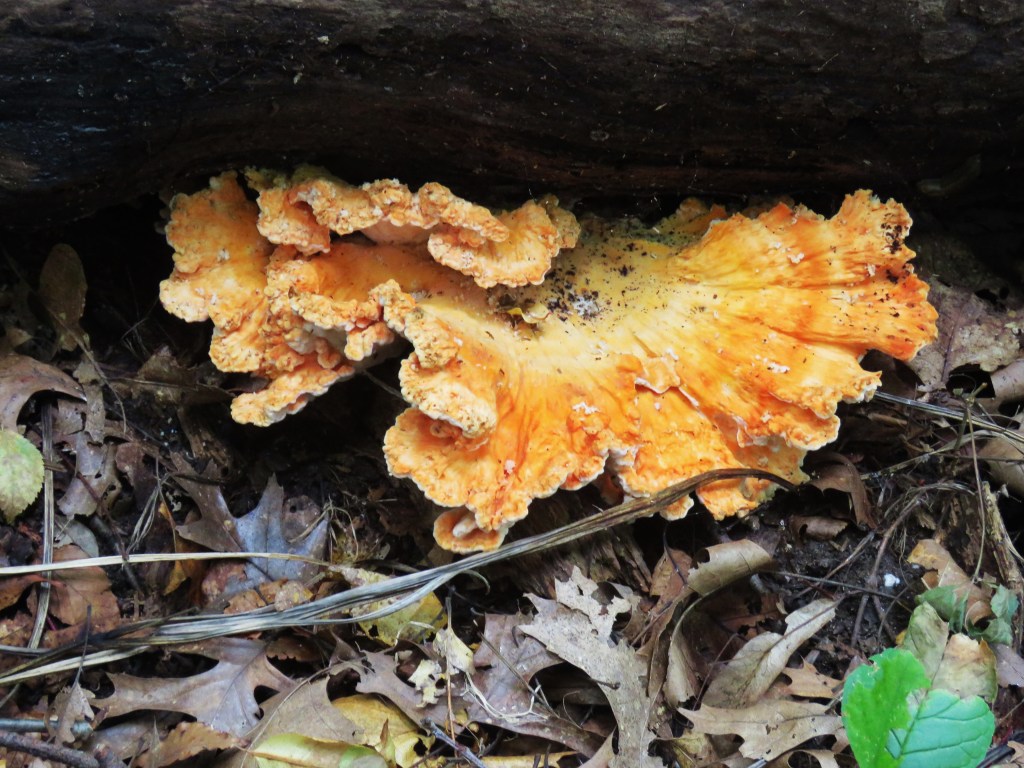
Have a very large specimen in my garden. Would love to share a photo.
Hi Bonny,
Sorry for the delay in getting back to you! As you know too, Chicken of the Woods is colorful and eye catching. Feel free to send that photo my way . My gov email is Schechterj@oakgov.com